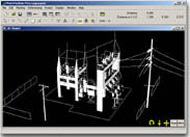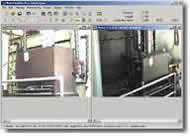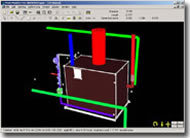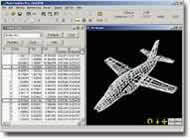Engineering and Surveying Applications
PhotoModeler software has many capabilities and features that support the requirements of engineers, surveyors, and architects. Mechanical, civil and chemical engineers use PhotoModeler for a diverse set of measuring and dimensioning tasks. Surveyors use PhotoModeler to generate maps, volumes, cut/fills, and get key dimensions. Architects use PhotoModeler to generate as-builts, facade drawings, and assist with shadow, volume, and massing studies.
With PhotoModeler you can:
- Generate as-built drawings
- Perform high-density surface modeling
- Measure and Model existing installations and equipment
- Do reverse-modeling of mechanical parts
- Model cylindrical objects such as pipes and vessels without pre-targeting
- Perform dynamic measurements on equipment or processes
- Perform architectural, BIM, and preservation studies
- Export models for use in CAD programs
- Track deformation and other movement/shape changes with the Motion tool in Premium
View some examples and learn how PhotoModeler is measuring and modeling everything from surface models to power plants. For other examples in architecture and surveying, click on these words.
- Electrical substation
- piping model
- aircraft model
- motion measurement
The folks at the Air Force Institute of Technology, Wright Patterson AFB are carrying out some fascinating work on MUAVs - Micro Unmanned Aerial Vehicles.
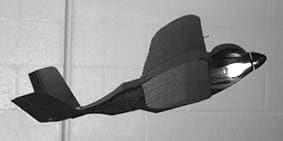
Captain Curtis developed testing methods for analyzing the performance of a miniature flapping wing mechanism that could later be adapted to a flapping wing micro air vehicle. He used a non-intrusive photogrammetry method employing laser dot projection and PhotoModeler Video to measure the shape of the wing during flapping. Approximately 100 data points representing wing shape and orientation were collected at 1000 Hz. Captain Curtis' Master's thesis, Laser Dot Projection Photogrammetry and Force Balance Measurement Techniques for Flapping Wing Micro Air Vehicles, describes this work in great detail.
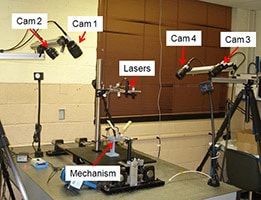
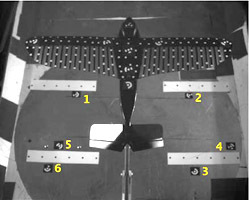
Captain Pitcher examined the static aeroelastic behavior of the Nighthawk MUAV wings using a combined experimental and computational approach. He used PhotoModeler Video during wind tunnel testing to measure the average deflected shape of the flexible and stiff wings during flight. Captain Pitcher's Master's thesis, A Static Aeroelastic Analysis of a Flexible Wing Mini Unmanned Aerial Vehicle, and the paper, Videogrammetry Dynamics Measurements of a Lightweight Flexible Wing in a Wind Tunnel, provide detailed information about these works.
PhotoModeler and the PMV module gave Captains Curtis and Pitcher a powerful, accurate and non-contact tool for measuring 3D wing shape changes at video frame rates. For further information you can contact Dr. Jonathan Black, Dept. of Aeronautics and Astronautics, Air Force Institute of Technology, Wright-Patterson AFB.


